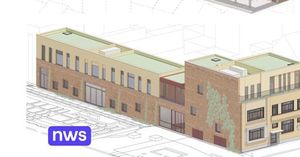As 2025 unfolds, many Canadians are gearing up to benefit from various government financial relief programs aimed at easing the burden of rising living costs. Among these initiatives, the Canada Revenue Agency (CRA) has introduced several key programs that promise to deliver significant financial support to eligible individuals and families.
One of the most talked-about programs is the $8,000 CRA Tax Benefit, which is not just a single payment but a collection of government programs, credits, and relief measures designed to help alleviate tax burdens. This includes well-known initiatives like the Canada Child Benefit (CCB), which can provide families with nearly $8,000 per child annually, and the Working Canadians Rebate, aimed at middle-income earners. Additionally, provincial programs, such as Nova Scotia’s Fertility and Surrogacy Tax Credit, can also contribute to the total relief.
The CRA Tax Benefit for 2025 is particularly important as it encompasses a variety of credits that can be combined to reach that $8,000 mark. For instance, the CCB is a tax-free monthly payment aimed at families with children under 18, while the Working Canadians Rebate offers a direct cash incentive to help offset rising living costs for middle-income earners. The provincial credits, like the Fertility and Surrogacy Tax Credit, can provide up to $8,000 per couple for eligible expenses, showcasing the government's commitment to supporting diverse groups.
Eligibility for these benefits hinges on several factors, including residency, income levels, family status, and tax compliance. For instance, individuals or families earning below specific thresholds—such as less than $75,000 per year—may find themselves fully eligible for these benefits. Moreover, filing your tax return on time is crucial, as many benefits are directly tied to reported income.
To determine eligibility for the $8,000 CRA Tax Benefit, Canadians are encouraged to follow a straightforward process. First, they must file their tax return by the deadline, which is typically April 30 for most individuals. Even those with no income must file to access potential benefits. Next, they should review the eligibility criteria for specific programs via the CRA portal and log into their CRA “My Account” for personalized information regarding their benefit eligibility.
In addition to the CRA Tax Benefit, Ontario residents can also expect to receive payments from the Ontario Trillium Benefit (OTB), which is designed to assist with high bills and everyday expenses amidst rising inflation. The OTB is a monthly payment that helps cover costs related to energy, property taxes, and the Harmonized Sales Tax (HST). This benefit integrates three different credits into one payment: the Ontario Energy and Property Tax Credit, the Ontario Sales Tax Credit, and the Northern Ontario Energy Credit.
For April 2025, the OTB payments are set to be distributed on April 10, providing timely assistance to those who need it most. The amount received from the OTB varies based on individual circumstances, including income and family size. For example, individuals can receive up to $360 from the Ontario Sales Tax Credit, while the Ontario Energy and Property Tax Credit can yield up to $1,421 for seniors. Residents of Northern Ontario can benefit from an additional $180 for individuals or $277 for families.
Eligibility for the OTB also requires filing a 2023 tax return, with specific criteria depending on age and living situation. For instance, individuals must be at least 18 years old, or if they are married or have a child, they can qualify even if younger. This benefit is particularly crucial for lower- and middle-income households, helping them manage essential living costs.
Moreover, Canadians can also look forward to a $680 payment from the CRA as part of the GST/HST credit program in 2025. This tax-free benefit is designed to help low- and moderate-income individuals and families offset the cost of GST and HST. Payments will be issued quarterly throughout the year, with the first payment already scheduled for April 4, 2025.
The GST/HST credit is automatically determined based on the 2023 tax return, meaning that individuals must file their returns on time to qualify. The maximum payment amounts vary based on family circumstances, with couples receiving up to $680 and individuals up to $519, along with an additional $179 for each child under 19. This credit significantly aids families in managing their financial responsibilities.
To maximize these benefits, Canadians are encouraged to keep detailed records, stay updated on CRA news, and consult tax professionals if needed. Understanding the eligibility criteria and application processes for these benefits is essential to ensure that no one misses out on the financial assistance available to them.
In summary, 2025 brings a wealth of financial opportunities for Canadians through various government programs designed to alleviate the stress of living costs. Whether through the $8,000 CRA Tax Benefit, the Ontario Trillium Benefit, or the GST/HST credit, eligible individuals and families have multiple avenues to explore for financial relief. As the April deadlines approach, it's crucial for Canadians to prepare their tax returns and verify their eligibility to take full advantage of these supportive measures.





